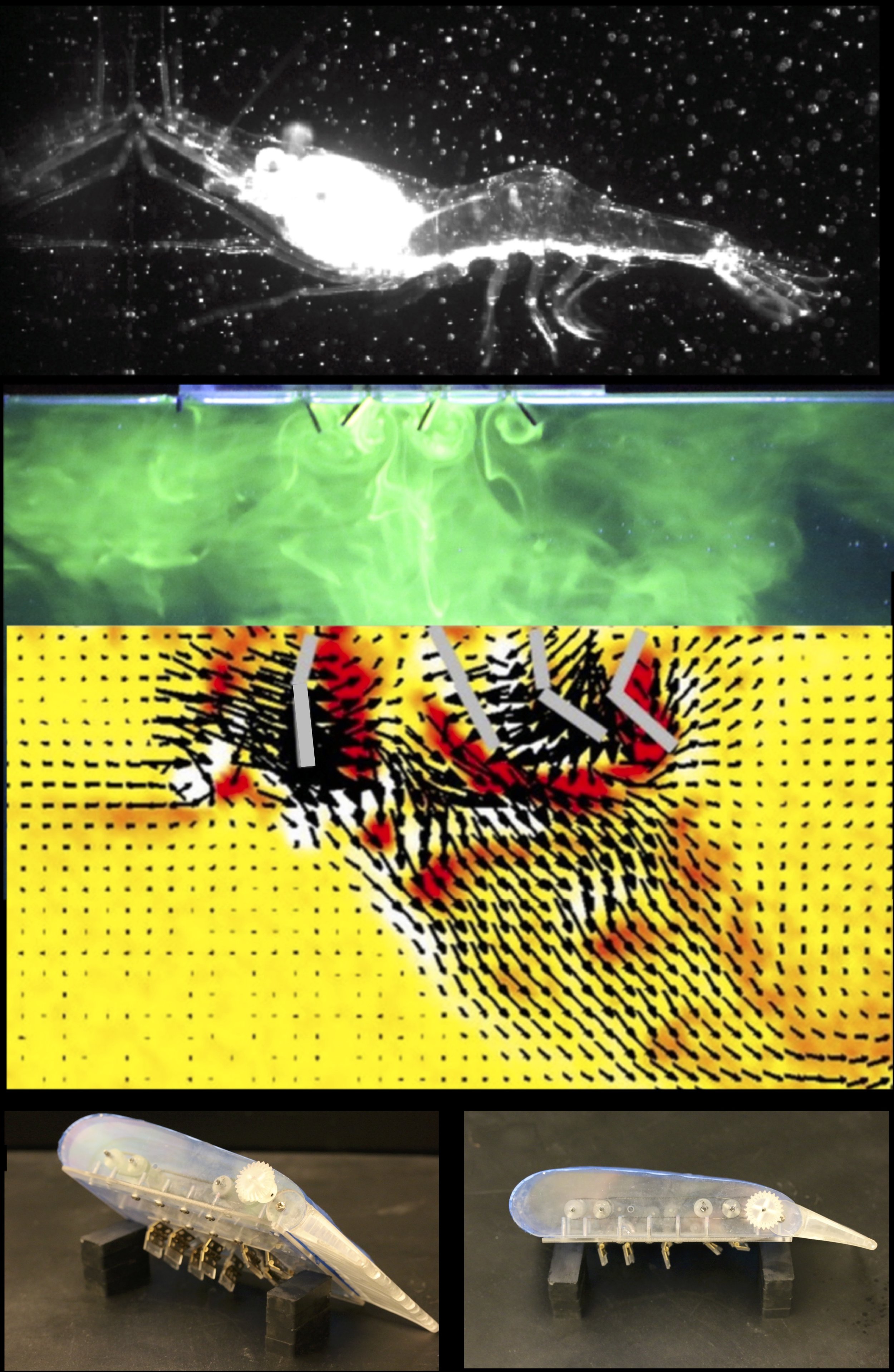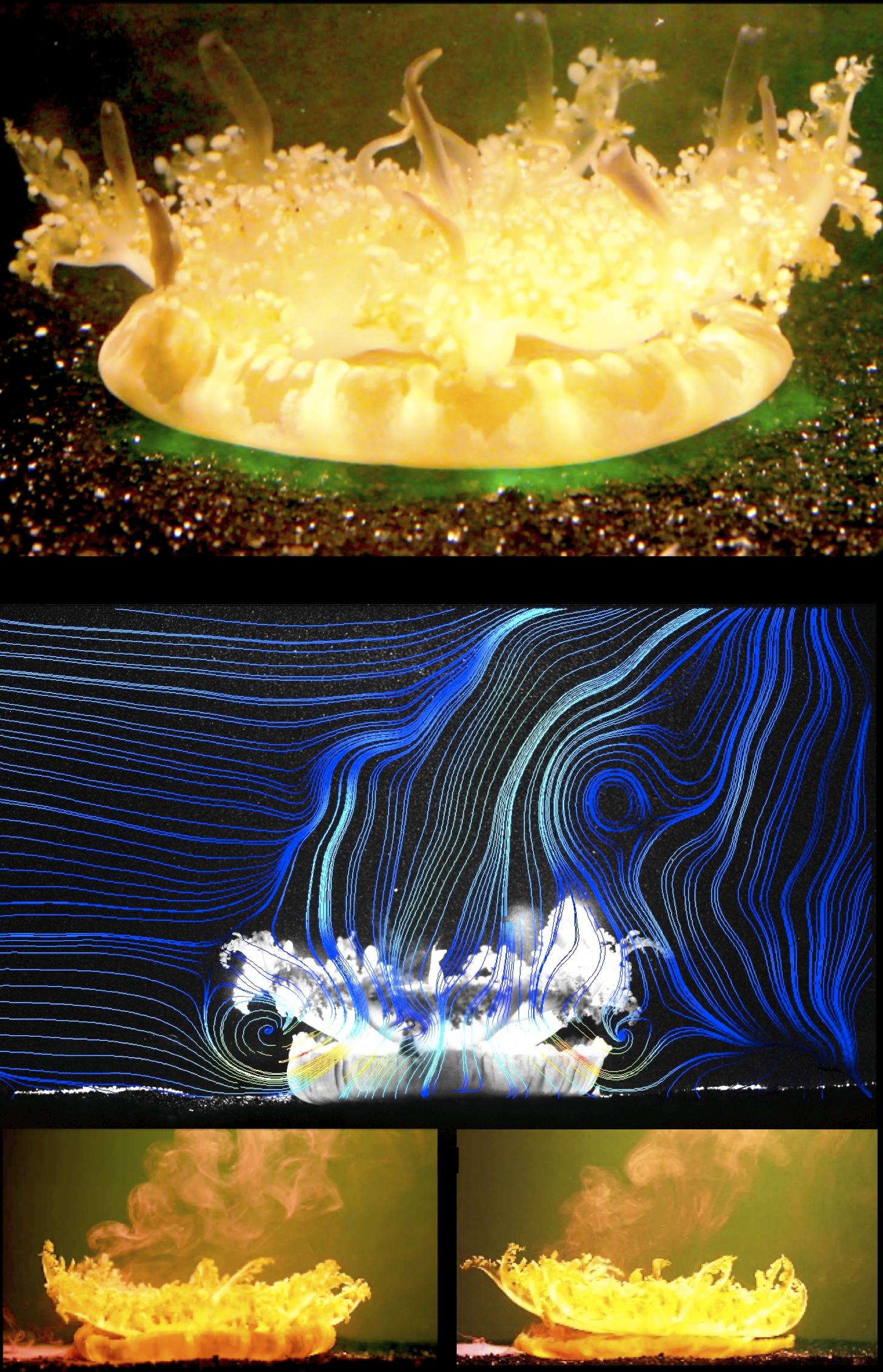
Crustaceans such as shrimp, krill and lobsters use a unique drag-based swimming strategy in which pairs of swimming limbs (pleopods) are rhythmically oscillated starting from the limb closest to the tail and progressing toward the head. Each pleopod is phase-shifted in time relative to the neighboring pleopod, resulting in a metachronal wave traveling along the same direction as the animal. We use a multi-pronged approach consisting of high-speed videos on free-swimming shrimp and controlled experiments on robotic models to understand how the geometric design of pleopods and the metachronal stroke kinematics impact swimming performance. Funding: NSF CBET 1706762 [abstract link].

There are a vast number of tiny insects of body lengths less than 1 mm (e.g., thrips) that are of agricultural importance, due to their role in acting as vectors of plant pathogens. Little is known about the aerodynamics of their flight and dispersal mechanisms. They have been proposed to augment lift through adaptations in the flight kinematics, wing flexibility and wing morphology. We use a dynamically scaled robotic platform of tiny insect flight to investigate the combined roles of wing-wing interaction during free flight and wing morphological modifications (bristled wings) on their aerodynamic performance. Funding: NSF CBET 1512071 [abstract link].

Patchy aggregations of sessile Cassiopea medusae are observed in shallow regions of sheltered marine environments saturated with sunlight. The medusae are oriented "upside-down" with their bells attached to the substrate and oral arms directed toward sunlight. Currents generated by the upside-down jellyfish can enhance vertical mixing in benthic boundary layer flows characteristic of seagrass beds and mangrove ecosystems. We use experiments on live animals to investigate how Cassiopea pulsing enhances pore water pumping and mixing in the background flow. Funding: NSF CBET 1916061.

Heart failure is a leading cause of death in the US. Flow patterns in the left ventricle have been proposed for use as hemodynamic markers in the clinical setting. We have developed an MRI-compatible left heart phantom model to investigate several manifestations of heart failure where structural alterations to the myocardial wall are observed. We are interested in the verification of accuracy of MRI-based diagnostic metrics developed for non-invasive assessment of disease severity. Our testbed is also being used to provide experimental data for validation of computational fluid-structure interaction models being developed by collaborators. Funding: OCAST Health Research Program.
